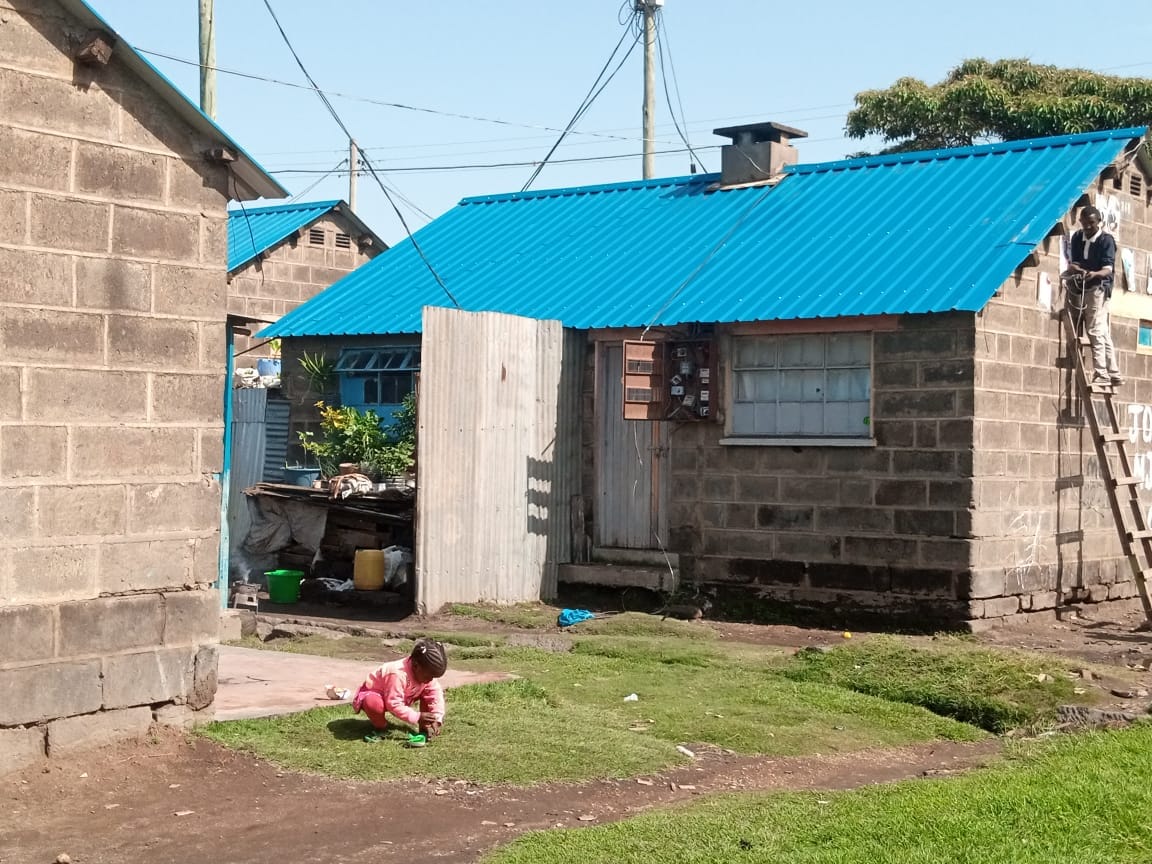By Daniel Kipchumba
Nakuru County, Kenya: Cancer is reported to be the 3rd leading cause of death after infectious and cardiovascular diseases, this is according to the National Cancer Institute of Kenya.
Asbestos has been linked to one of the contributing factors for cancer infections.
In Nakuru County, Karimi Mwangi, a resident of Flamingo Estate, sits outside his Asbestos roofed house listening to his radio on a sunny afternoon, beside him his ducks vigorously scoop mud from a puddle. From the physical look one can tell that houses in that estate including Mwangi’s have seen better days from dilapidated walls and roofing. They were built over thirty years ago when knowledge about the relationship between Asbestos and lung cancer was little known, something that Mwangi now knows too well.
“I have been living here for a very long time, I didn’t know that Asbestos has any negative effects on human health, but our area member of county assembly recently brought experts to educate us about the same and now he is helping us put up new roofing for free.”
Mwangi and his neighbors have been using water harvested from the Asbestos roofing ever since, oblivious to the danger at hand. “We have been using water harvested from this roof for all our domestic use, drinking, washing and even bathing, you should have seen people’s reaction when we were educated about the dangers that it poses to our health.” He says as he throws food leftovers to his ducks nearby.
Mr. Nelson Ng’ang’a, an officer in charge of poverty eradication and economic empowerment of the people in Flamingo ward, says that the move to remove the Asbestos roofing was a result of wide consultation with stakeholders. “There was as a result of a public participation forum between the community around and the local leadership, the community fronted and passed the idea to remove Asbestos as a priority, that’s when the area member of county assembly in conjunction with Nakuru county government swung into action,” Ng’ang’a says.

Dr. Joy Mugambi, the county director of the Administration and planning department of Health, says that the county government is very concerned about Asbestos roofing. “We are concerned because the fine fibers of Asbestos once inhaled by human beings, they lodge into your lungs and they do not disintegrate to be excreted from your body, they plug into the tissues of the lungs and the lung undergoes changes, and this is how lung cancer is formed” explains Dr. Joy.
According to Mr. Solomon Kihiu Nakuru county director of the Environmental Management Authority NEMA, Asbestos material is not usually disposed of just like any other waste, because its material can last for a long time in the soil and could end up harming people several years after disposal.
“We have special classes of incinerators that can be used to burn Asbestos under very high temperatures, we also recommend that since these incinerators are few they can also be buried. Asbestos is supposed to be encapsulated with a very heavy material even before being transported to prevent the fibers from being released into the air.’’ Solomon says.
On his part, Environmental activist Mr James Wakibia, says there is a need for public awareness about the dangers of this roofing material. “The government should start by sensitizing the public about the effects of Asbestos, then prioritize it in the county budget, that way there will be no resistance from the community.”
The majority of houses built for government workers in the early 1980s are Asbestos roofed. As the roofing is being replaced in Flamingo estate, Karimi Mwangi hopes that no one has been affected by the roofing they have lived under for decades. “I just pray that no one has been affected by this thing, considering that people who live in this estate are poor, it will be a big burden and we are thankful for the move.” He says.
According to Kenya National Cancer Institute National Cancer National Cancer Registry, a total of 5,825 new cancer cases from 23 facilities were notified during the July to December 2021 period. In Kenya, the regulation on the disposal of waste including Asbestos is provided for in the Environmental Management and Coordination Act.














